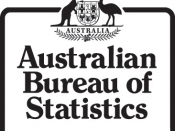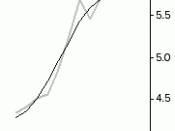Unemployment exists for those people who are part of the labour force and are therefore able and willing to work at the existing wage level, yet are unable to find a paying job. Unemployment refers to the proportion of people in the working population who are unemployed, in other words it simply refers to those people who are out of work.
In Australia the most accurate statistics of unemployment are those compiled by the Australian Bureau of Statistics (ABS) on a monthly basis, whose definition of unemployment is of those persons aged 15 years and over who are not employed during a survey week. Australia's unemployment rate is currently at a 28-year low of 5.1 per cent.
No single economic statistic attracts more notice or implies more about the well being of the economy than does the unemployment rate. The unemployment rate as calculated by the ABS is the percentage of the labour force which is unemployed, that is, the number of unemployed workers divided by the total civilian labor force, which includes both the unemployed and those with jobs.
Measuring the number of unemployed workers actually seeking work is extremely difficult in practice. Critics believe that current methods of measuring unemployment are inaccurate as official unemployment figures produced by the ABS are said to understate 'true' unemployment, as they do not take into account hidden unemployment or underemployment for example.
There are many different categories of unemployment. The categories that are most common in today's society are frictional, cyclical, and structural unemployment. Frictional unemployment, or search unemployment refers to those who are temporarily unemployed between leaving one job and starting a new one. It arises because either employers fire workers or workers quit, usually because the individual characteristics of the workers do not fit the individual characteristics of the...


